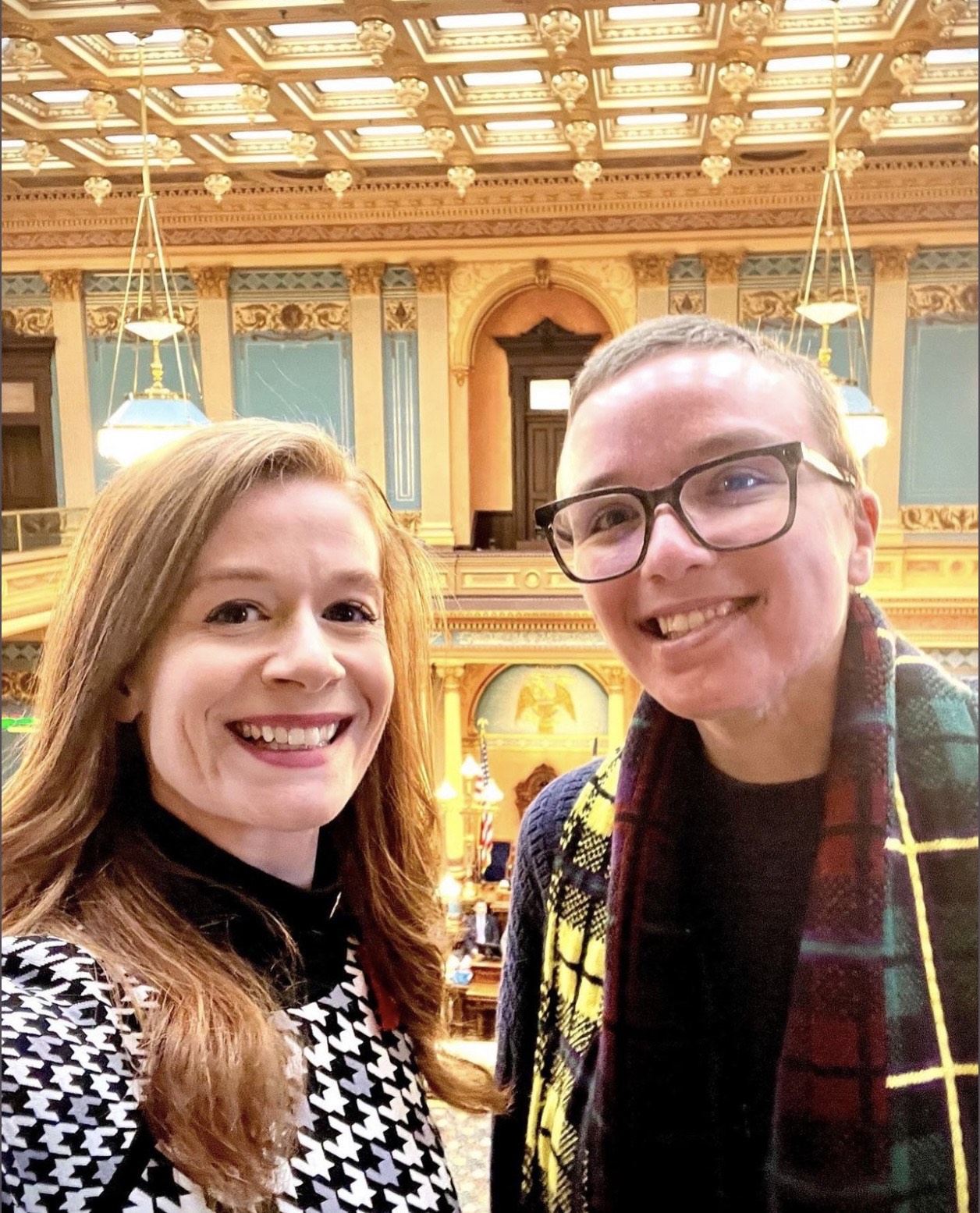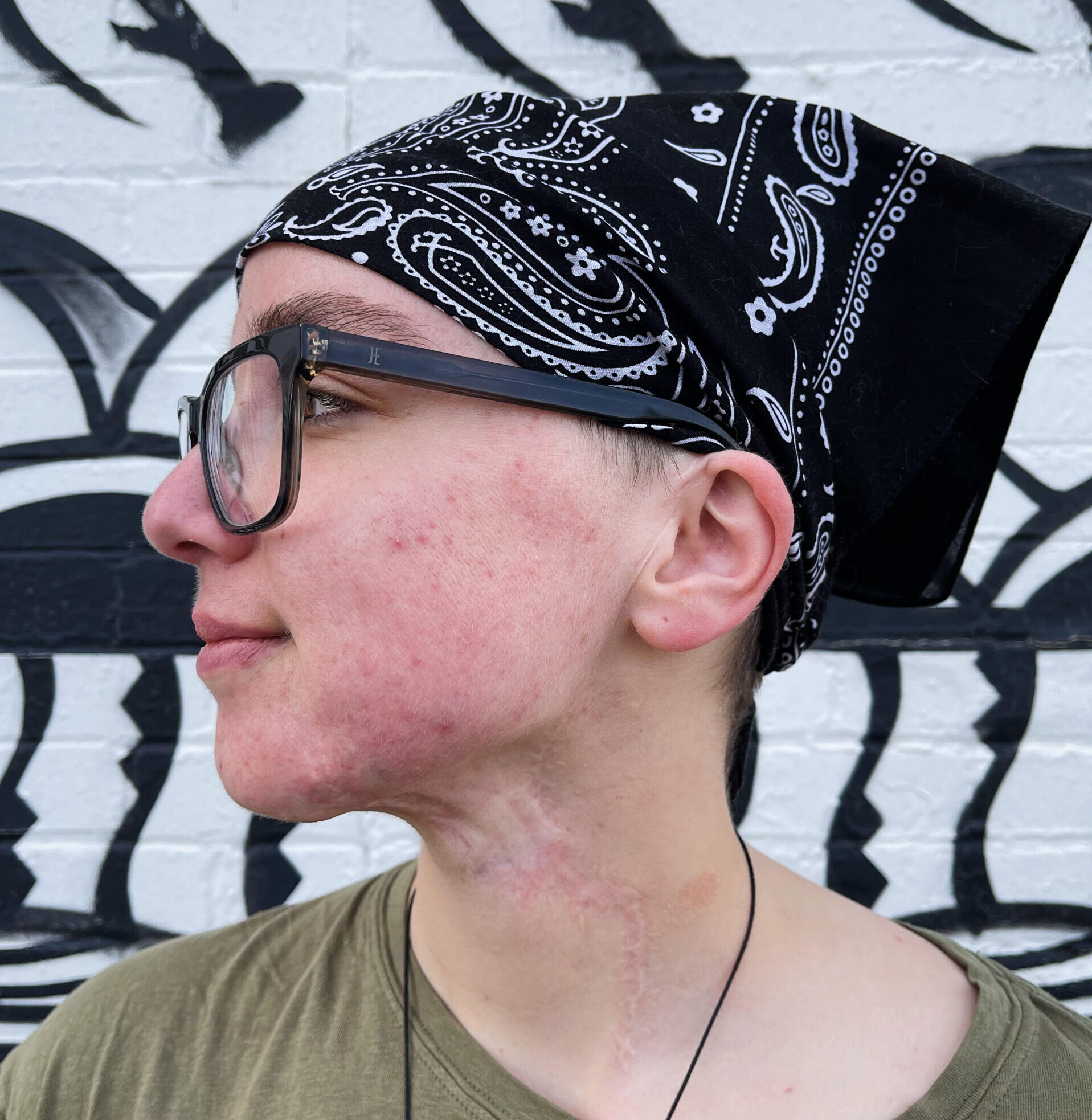Facial differences are erased by TV, movies, and social media.
by Charlene Pell
Part 2 of 2.
Since research has shown that most nondisabled people meet someone with a disability through television or film, authentic and proportionate representations of people with facial differences are paramount because this segment of the disabled community is often literally, culturally, and socially hidden from view. The experiences of the facial different community are consistently diminished, erased, and hidden.
Although one in four adults in the United States has a disability (Centers for Disease Control and Prevention), daily, few people outside of health care encounter burn survivors, people with craniofacial anomalies, rare diseases, or illnesses and accidents that result in facial disfigurement. Most often, we see people with mobility issues in life and media.
The lack of characters with facial disfigurement in advertising, television, and film is striking, even though it, too, is a disability. For example, the major disability rights laws, the Americans with Disability Act and the U.K. Equality Act, afford people with facial disfigurement the same protections as those with mental and physical disabilities. Initiatives by writers, producers, casting agents, and television and film studio executives overlook disability, and especially disfigurement as a part of diversity.
Perpetuation of Stigma
Deep-seated bias and misrepresentation in the media perpetuate the stigma associated with disfigurement. Some developing countries view disfigurement through a moral model of disability as a curse or karma for past wrongdoings. Disfigured people are not allowed to attend schools, seek employment, or enter relationships because they might scare others or disgrace their families. People with disfigurement are at high risk for body dissatisfaction, which may be internalized into low self-esteem and self-stigma.
On the rare occasions when we see anyone in an ad with a facial or skin difference, it promotes a drug or treatment for the burning, itching, and flaking skin caused by psoriasis. Most ads emphasize having “clearer skin” as a benefit of taking the medication—while a Taltz ad makes a bolder claim; it targets the entire message to the “chance of achieving completely clear skin.” The ad insinuates that people without “completely clear skin” cannot be close to or intimate with the ones they love because they are undesirable to touch. In other words, people without “completely clear skin” must hide their difference.
In his memoir FaceIt: Facial Disfigurement and My Fight for Face Equality, the late James Partridge, the founder of the U.K.-based organizations Changing Faces and Face Equality International (FEI), described facial disfigurement as a globally neglected human rights issue. Thirty-six nonprofits worldwide, including the organization I founded, Facing Forward Inc., have joined FEI’s mission to ensure that those with facial differences live freely, without the daily indignity and discrimination they suffer, and to advocate for authentic media representation. This year, 2023, marks the fifth year of recognition of FEI’s Face Equality Week. During the week of May 17 to 24, people with facial differences promote their differences as an equality issue like race, gender, and disability.
Targets of Cyberbullying
People with facial differences are frequent targets for cyberbullying. Social media platforms tell victims their experiences of hate online don’t breach guidelines and suggest victims should toughen up and not take such cruel and hateful remarks seriously.
One of the most reprehensible examples of this involves the cyberbullying of a young girl with Rhett’s syndrome, Sophia Weaver, and her parents. Trolls tweeted that Sophia’s parents should kill her and that her condition was an example of why abortion should be legal. Initially, Twitter said the memes did not violate their policy. However, after public outcry and media attention, Twitter apologized and removed the tweets. Twitter has now added disability to its hate speech reporting system. Sophia died in 2019; she was 10 years old. Since then, her mother, Natalie, founded Sophia’s Voice, a nonprofit to raise awareness and destigmatize facial deformities so that no child has to endure the hate Sophia experienced.
Exposure to Individuals With Visible Differences
Some scholars believe that exposure to individuals with visible differences helps to integrate them into society and destigmatize differences and disabilities. I agree with this hypothesis and believe that the more often the public encounters film and television that features disabled and disfigured individuals, the more natural it will become. Just as ongoing, sustained positive exposure to LGBTQ individuals and people of color on television and in movies has reduced prejudice and stigmatization toward these marginalized groups, similar exposure would positively impact the disabled community.
An example of this is the growing acceptance of actors with Down syndrome. Chris Burke was the first actor with Down syndrome to appear on television in 1989 in the hit series Life Goes On. Since then, many actors with Down syndrome have been cast in positive portrayals on TV and in film, helping to normalize Down syndrome as a part of the human condition. Twenty years later, Zack Gottsagen, an actor with Down syndrome, has received awards and acclaim for his lead role in the 2019 film, The Peanut Butter Falcon. In 2023, Champions, the delightful and poignant story about a down-and-out recently fired coach and a basketball team, featured young actors with Down syndrome.
Along with all the organizations mentioned above, we call for global recognition and inclusion of people with facial disfigurement in every aspect of advertising, television, and filmmaking to reduce their daily stigma. The media industry could lead the effort by casting people with disfigurement in authentic roles and adhering to FEI guidelines for discussing facial disfigurement.
To advance equality, we must stop fearing our differences, recognize our conscious and unconscious biases, and shift our focus to our unique strengths and talents. End the worn-out tropes and stereotypes and normalize disfigurement. Girls and women with distinctive faces have the same hopes, dreams, and capabilities as nondisfigured girls and women. We, too, have considerable purchasing power and the desire to buy products and services that recognize us in their advertising.
Charlene Pell is the founder and executive director of Facing Forward Inc., a 501(C)3 nonprofit that empowers people with disfigurement to contend with staring and communicate confidently. She advocates for the appreciation and inclusion of people with disfigurement, and proportional, authentic media representation.
This article (including links) was originally published by Psychology Today. Please click here to view the original article.
Read Part 1 of the article here.
Tags: advocacy, Face Equality, facial difference, facial difference community, media representation Posted by


